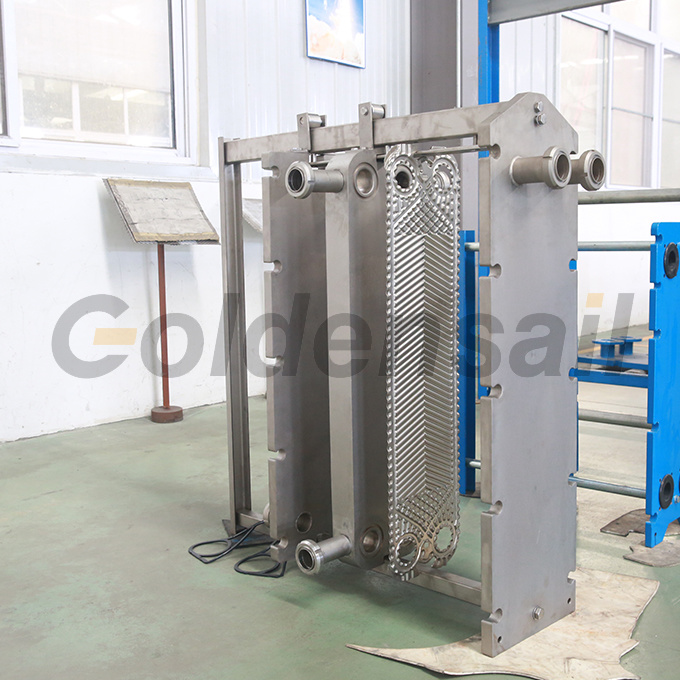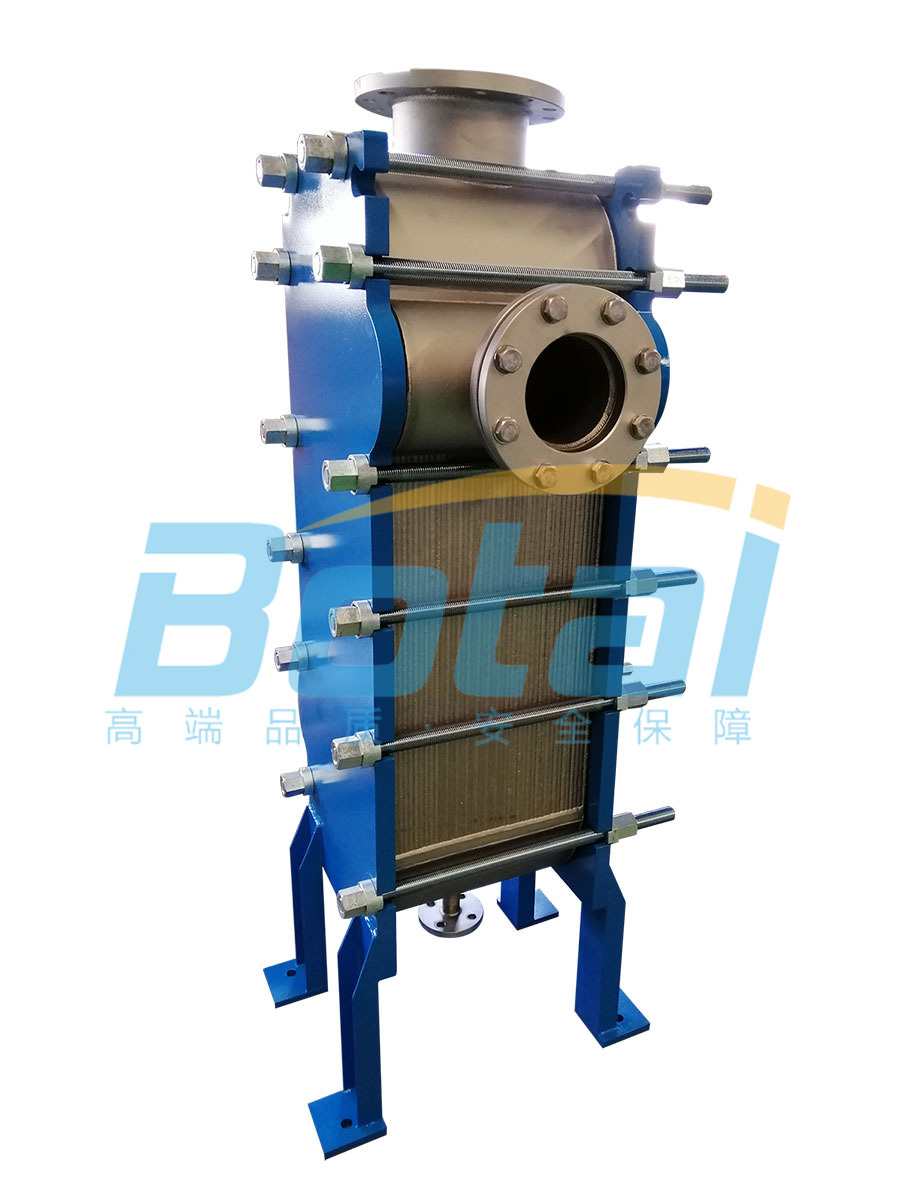Tianjin Botai Heat Exchange Equipment Co.,Ltd
The structural principle of a plate heat exchanger
2020-02-11
The plate heat exchanger is a type of heat exchanger made of thin metal plates pressed into heat exchange plates, which are assembled by stacking. Thin rectangular channels are formed between various plates, allowing for heat exchange through half plates. The four corner holes of the plates and gaskets form the distribution and collection pipes for the fluid, while also separating the hot and cold fluids. The working fluid flows through the narrow and winding channels formed between two plates.

The plate heat exchanger is a type of heat exchanger made of thin metal plates pressed into heat exchange plates, which are assembled by stacking. Thin rectangular channels are formed between various plates, allowing heat exchange through half plates. The four corner holes of the plates and gaskets form the distribution and collection pipes for the fluid, while separating the hot and cold fluids, with the working fluid flowing through the narrow and winding channels formed between two plates.
The hot and cold fluids pass through the flow channels in sequence, with a separating plate in the middle dividing the fluids and facilitating heat exchange through this plate. The plates are sealed and guided by sealing gaskets, creating separate channels for cold and hot fluids, exchanging heat with the adjacent plates to achieve the desired temperature for the user. The two heat exchange media flow into their respective channels, forming counterflow or parallel flow to exchange heat through each plate.
Each plate of the plate heat exchanger has openings at the four corners, and after assembly into a plate bundle, forms the distribution and collection pipes for the fluid. After the heat exchange of the cold and hot media, they circulate back through their respective collection pipes for reuse. The heat exchange plates are stamped into various corrugated shapes, currently mostly V-shaped grooves, to prevent scaling on the plates.
The main components of the plate heat exchanger include heat transfer plates, sealing gaskets, pressing plates, guide rails, and clamping bolts. The heat transfer plates are the main elements for heat exchange, generally made in a zigzag pattern. Depending on the type of fluid medium, the material of the heat transfer plates varies, with most made of stainless steel and titanium.
The end pressing plates mainly serve to clamp all the heat transfer plates tightly, ensuring that the fluid medium does not leak. The sealing gaskets primarily provide sealing between the hot plates, and leaks in the plate heat exchanger are often caused by misalignment or aging of the sealing gaskets. The clamping bolts mainly serve to clamp the end caps and heat transfer plates.
Previous Page:



